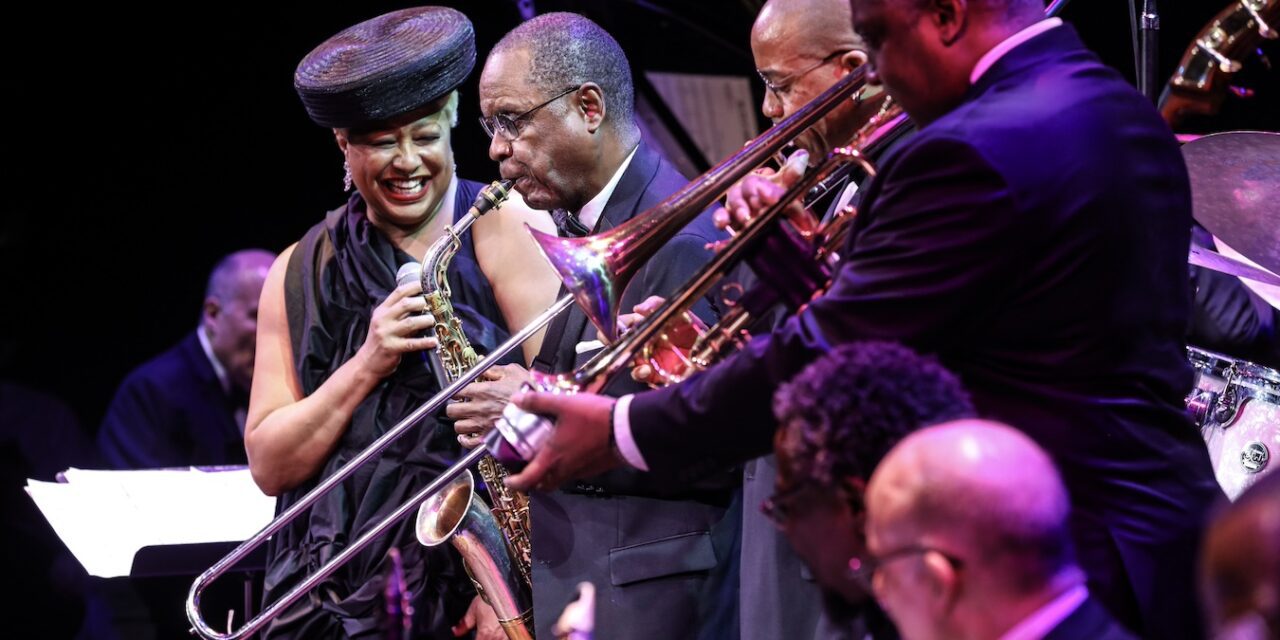Music Review by Marilyn Lester . . . .
This year, 2024, marks the 125th birthday of one of America’s finest composers and musicians: pianist and band leader, Edward Kennedy (Duke) Ellington. For 100 of those years, The Duke Ellington Orchestra has been in continuous operation, first under Duke, then son Mercer, and now grandson, Paul Ellington. No “ghost band” this—bands such as Count Basie’s and Charles Mingus’, whose leaders have long since passed away. And, in this outing, Symphony Swing! An Evening of Duke Ellington, at Washington, DC’s Kennedy Center, the legendary band was not only in exquisite form, but played homage in the city of their founder’s birth.
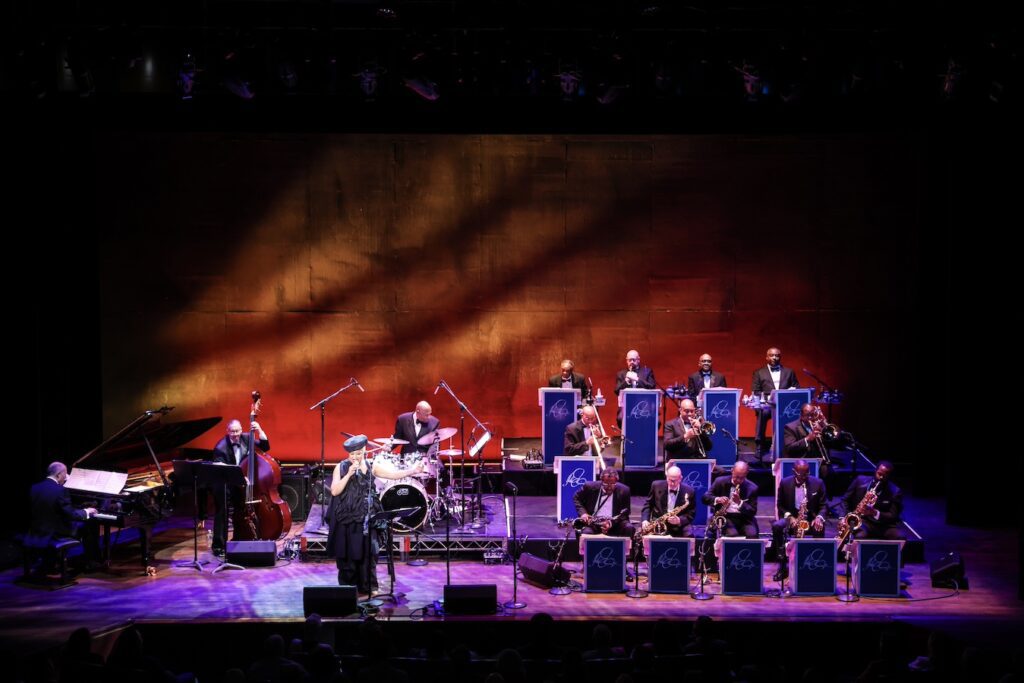
While Paul Ellington is a crucial behind-the-scenes leader, out front is long-time band member Charlie Young III, who occupies one of the alto sax chairs (and is saxophone section head) as well as leading the 16-member orchestra. There could be no other opening but the band’s theme song from 1940 forward, Billy Strayhorn’s swinging “Take the A Train.” That tune has been brilliantly and magically setting the stage for the Duke Ellington Orchestra for more than 80 years, and it’s a never-fail to get feet tapping and to uplift the energy in the room. Therein followed a program of many Ellington and Strayhorn favorites and a few surprises—popular numbers in the enormous Ellington repertoire, but also tunes not generally well-known to the casual listener. Among those gems were Strayhorn’s 1951 “The Eighth Veil” and “I’m Checking Out—Goombye,” a collaboration between Ellington and the newly-hired Strayhorn in 1939.
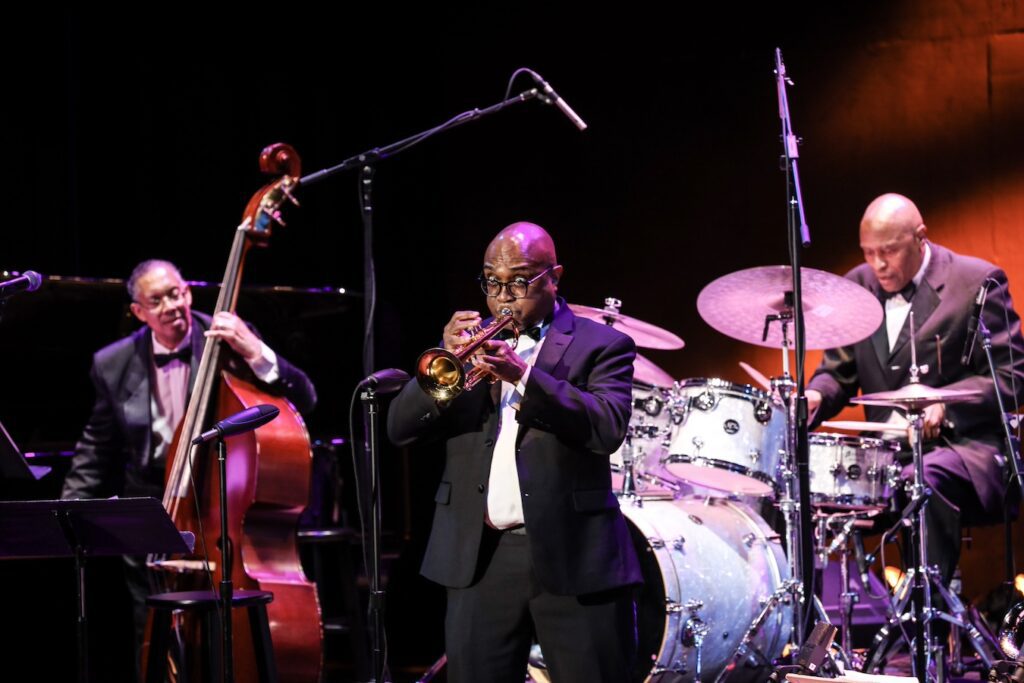

Ellington, a brilliant arranger as well as a composer, well knew the tone and skills of each of his band members; he wrote specifically to this dynamic, which Strayhorn dubbed, the Ellington Effect. Carrying on this lineage, Young featured several band members in the role of their predecessors. “Isfahan,” from The Mideast Suite, showcased alto saxophonist Mark Gross playing the features written for Johnny Hodges. After a trip to London in 1958, Ellington wrote The Queen’s Suite. He had one copy of the recording made and sent to Queen Elizabeth II, leaving instructions that no more copies would be pressed from the master until after his death. Yet, Ellington did record a solo of the beautiful “Single Petal of the Rose,” showcasing his often underrated piano skills. Pianist Robert Redd performed the solo with his own sensitive and striking artistry, with support late in the tune by bassist Hassan ‘JJ’ Shakur. Redd also performed “Satin Doll,” a 1954 Ellington-Strayhorn collaboration, with a feature by Shakur that was truly inspired; his creative ideas would have made Ellington’s legendary bassist Jimmie Blanton nod in complete approval.
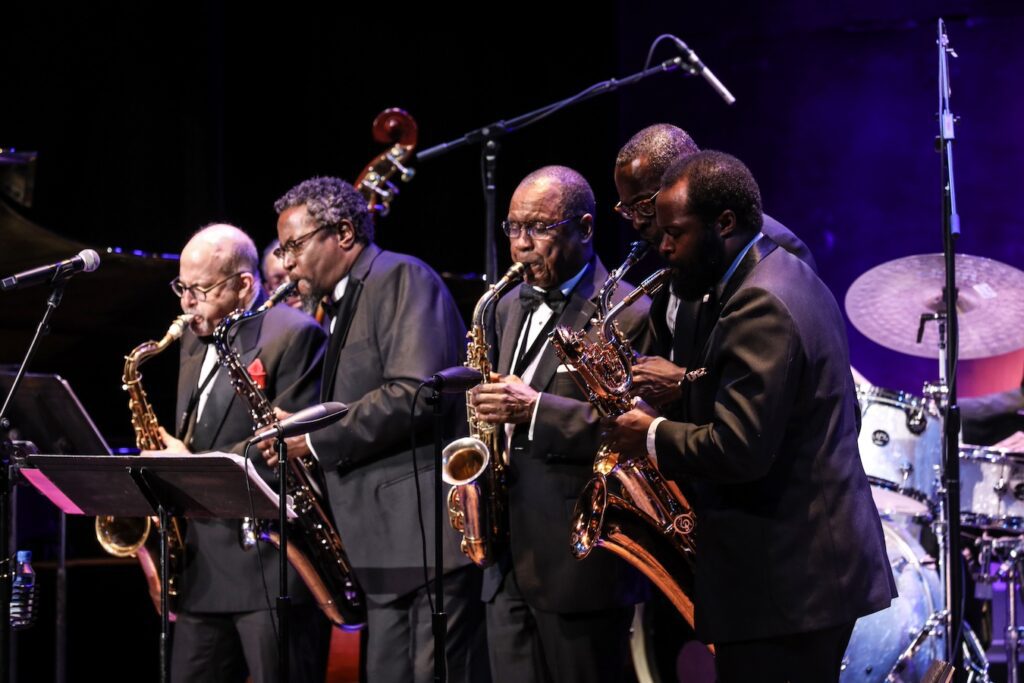

The genesis of the Ellington orchestra was in the 1923 formation of the Washingtonians. Evolving into the Duke Ellington Orchestra in a few years, the group’s trajectory led to a Cotton Club residency and then to touring. In 1931, shortly before life on the road became a band lifestyle, Ivie Anderson became the Ellington Orchestra’s first “girl singer” (leaving a decade later for health reasons). Representing the many women who would vocalize the catalog over the years, with the orchestra and on record (including Ella Fitzgerald who recorded The Duke Ellington Songbook), Lisa Fischer delivered a set of hits with verve. Ellington really didn’t set out to create them, but lyricists hearing the potential in many tunes, set lyrics to them, such as “Don’t Get Around Much Anymore” (originally “Never No Lament”) with lyrics by Bob Russell. Fischer, more than a straight-ahead jazz singer, leans into the blues, which underpinned her interpretations, especially on Billy Strayhorn’s 1939 ballad, “Something to Live For.” An outlier in the mix was “Sunny” (Bobby Hebb) from 1967’s Francis A. & Edward K. album. Sinatra sang this number among the eight tracks on the record, which curiously contained only one Ellington composition, “I Like the Sunrise.”
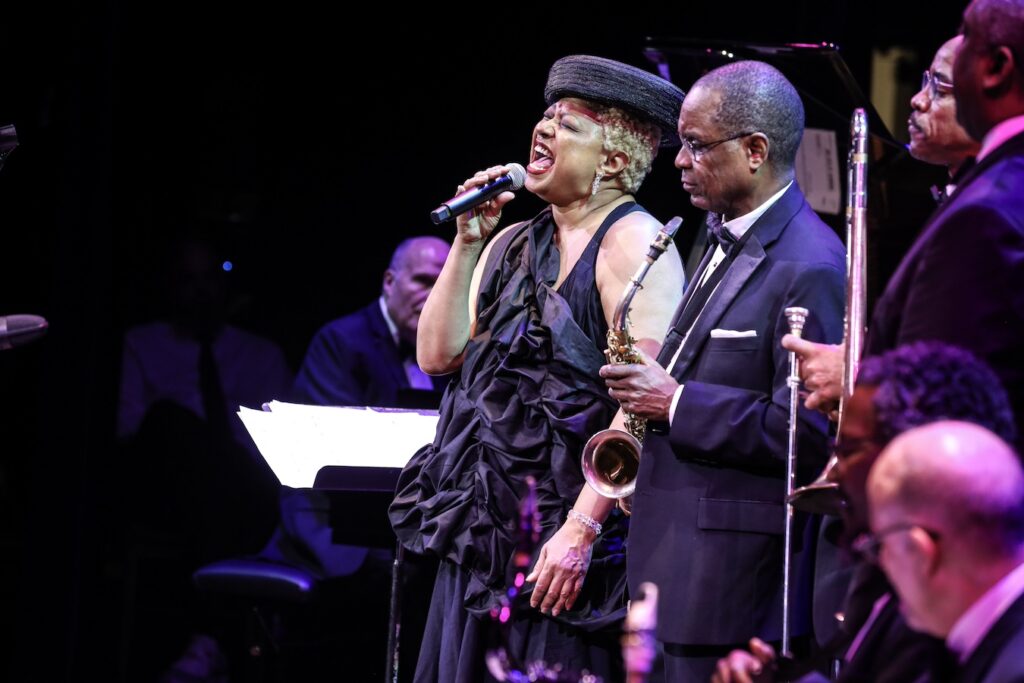

The band, with other members Shelley Paul and Daniel Block (tenor sax); Jason Marshall (baritone sax); Andre Hayward and Reginald Cyntje (trombone); Tyrone Block (bass trombone); Bryan Davis, Shawn Edmonds, Irving Grossman, Jon Mark McGowan and James Zollar (trumpet) and David F. Gibson (drums), emulated the Ellington Effect with their crisp, tight playing plus a bold, energetic sound (hats off to the sound techies at the Kennedy Center as well). Play-out was on the intensely swinging and hopping “Cottontail,” with a frontline of saxes featured. The encore of the now-famous standard, 1931’s “It Don’t Mean a Thing (If It Ain’t Got That Swing)” was the cherry on the sundae of prime Ellingtonia, honoring the American genius who never stopped creating and whose legacy is undying.
Symphony Swing! An Evening of Duke Ellington took place March 15 and 16 at The Kennedy Center in Washington D.C. www.kennedy-center.org
Photos: Jati Lindsay


